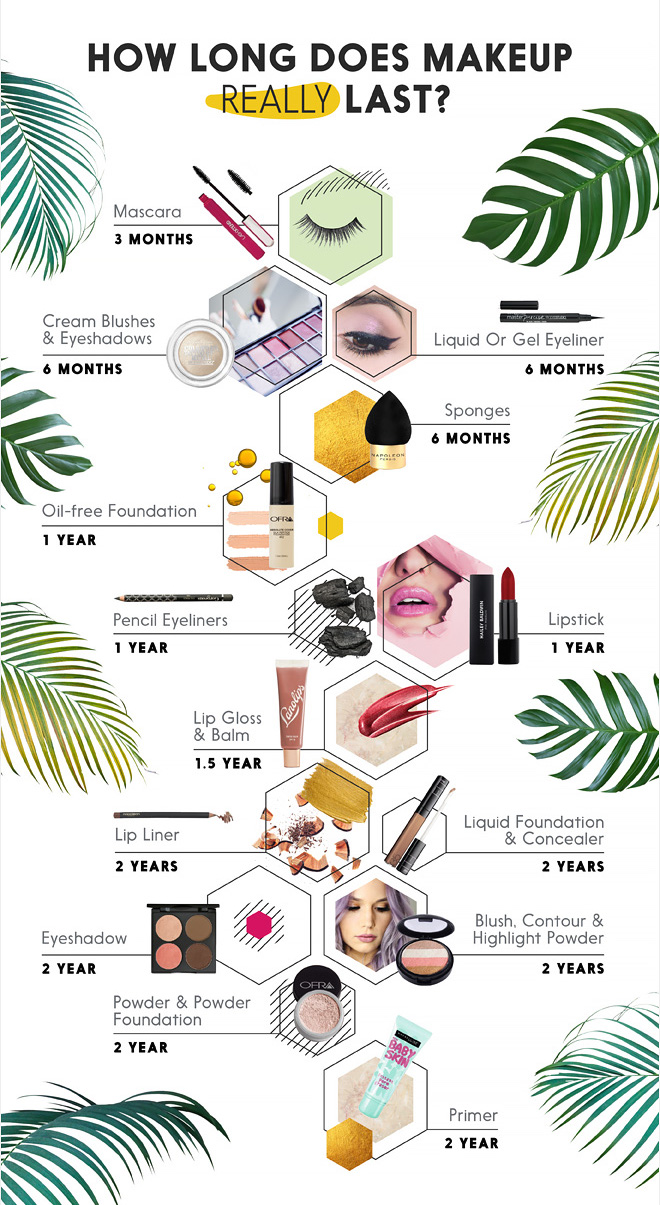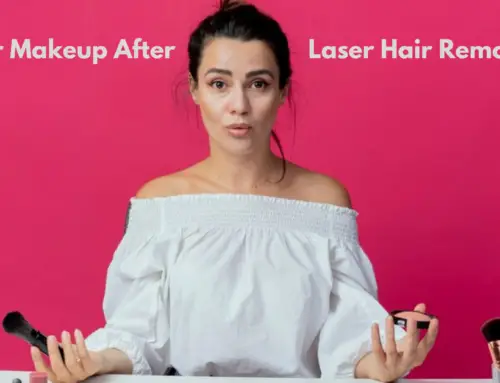When it comes to eyeshadow, one question that often comes to mind is: how long does it actually last? Well, here’s an interesting fact for you – the lifespan of eyeshadow can vary depending on several factors, such as its formulation, usage, and storage. It’s not as simple as an exact expiration date like food products, but understanding the general lifespan can help maximize your makeup collection.
Let’s dive into the world of eyeshadow longevity. Historically, eyeshadow has been used for thousands of years, with evidence of its usage dating back to ancient civilizations like Egypt, where vibrant colors were created from crushed gemstones. Interestingly, the technology and formulations of eyeshadow have significantly evolved over time, leading to better staying power. Today, many eyeshadows are designed to last anywhere from 6 months to 2 years, depending on the brand and packaging. This lifespan can also be extended by taking proper care of your eyeshadow, such as storing it in a cool, dry place and using clean brushes or applicators.
Eyeshadow typically lasts for around 2 years. However, it’s important to check the expiration date or look for signs of a change in texture or smell. The longevity of eyeshadow also depends on the brand, formulation, and storage conditions. To make your eyeshadow last longer, keep it in a cool, dry place and avoid exposing it to direct sunlight or excessive moisture. Regularly sanitizing your makeup brushes can also help maintain the quality and extend the lifespan of your eyeshadow.

How Long Does Eyeshadow Last?
Eyeshadow is a popular cosmetic product used to enhance the appearance of the eyes. It comes in various colors, textures, and formulas. Many people invest in high-quality eyeshadows, but they often wonder how long these products last before they expire or lose their effectiveness. In this article, we will explore the shelf life of eyeshadow and factors that can affect its longevity.
Factors Affecting the Longevity of Eyeshadow
Several factors can affect how long eyeshadow lasts. Understanding these factors can help you determine the lifespan of your eyeshadow and make informed choices when purchasing or using the product.
Quality of the Eyeshadow
The quality of the eyeshadow plays a significant role in its longevity. Higher-quality eyeshadows tend to have better formulations and ingredients that preserve their freshness and integrity for a longer time. On the other hand, lower-quality eyeshadows may have less effective ingredients, making them susceptible to degradation and expiration.
Storage Conditions
The way you store your eyeshadows can greatly impact their longevity. Proper storage helps prevent exposure to heat, humidity, and light, which can degrade the product. It is best to store eyeshadows in a cool, dry place away from direct sunlight and moisture. Avoid leaving them in hot or humid environments, such as bathrooms or near windows.
Frequency of Use
The frequency with which you use your eyeshadows also affects their lifespan. Regular use can lead to more air exposure and contact with brushes or fingers, which can introduce bacteria and other contaminants into the product. If you use your eyeshadows infrequently, they may last longer compared to those used daily.
Shelf Life of Eyeshadow
Eyeshadows generally have a shelf life of about 2 to 3 years. However, this can vary depending on the formulation, quality, and storage conditions. Some eyeshadows may expire sooner, while others can last longer if stored properly.
Powder eyeshadows tend to have a longer shelf life compared to cream or liquid formulas. The absence of water in powder eyeshadows makes them less prone to bacterial growth. Cream and liquid eyeshadows, on the other hand, may have a shorter shelf life due to their higher moisture content.
Signs of Expired Eyeshadow
Using expired eyeshadow can lead to skin irritation or infections. It is important to recognize the signs of expired eyeshadow to protect your eye health.
Some common signs of expired eyeshadow include:
- Change in color or texture
- Unpleasant odor
- Patchiness or uneven application
- Irritation or redness on the eyelids
If you notice any of these signs, it’s time to discard the eyeshadow and replace it with a fresh one.
Tips for Extending the Lifespan of Eyeshadow
To maximize the lifespan of your eyeshadow and prevent it from expiring prematurely, consider the following tips:
- Keep the product tightly closed when not in use to minimize air exposure.
- Use clean brushes or applicators to prevent contamination.
- Avoid touching the eyeshadow with unwashed hands.
- Do not add liquids or diluting agents to the eyeshadow, as this can alter its formulation and compromise its lifespan.
- If possible, store eyeshadows in a cool, dry environment, such as a drawer or makeup bag.
Conclusion
Eyeshadows have a typical shelf life of 2 to 3 years, but this can vary depending on factors such as formulation, quality, and storage conditions. By understanding these factors and recognizing the signs of expired eyeshadow, you can ensure the longevity and safety of your products. Remember to store your eyeshadows properly, use clean brushes, and discard any eyeshadows that show signs of expiration. By following these guidelines, you can enjoy your eyeshadows to their fullest potential.
Key Takeaways – How Long Does Eyeshadow Last?
- Eyeshadow typically has a shelf life of 6-12 months.
- Using expired eyeshadow can lead to eye irritation or infection.
- Proper storage, away from direct sunlight and moisture, can extend the lifespan of eyeshadow.
- Powder eyeshadows usually last longer than cream or liquid formulas.
- Regularly cleaning your eyeshadow brushes can help prevent bacteria buildup and prolong product lifespan.
Frequently Asked Questions
Eyeshadow is an essential makeup product for many individuals, but it’s important to know how long it lasts to ensure both its safety and effectiveness. Here are some common questions and answers about the lifespan of eyeshadow:
1. How long does eyeshadow typically last?
Eyeshadow usually has a shelf life of around 2-3 years from the date of purchase. However, it’s important to note that this can vary depending on the brand and formulation. Some eyeshadows may expire sooner, especially if they contain natural ingredients or are water-based.
It’s also worth mentioning that the texture and quality of the eyeshadow may deteriorate over time, making it less pigmented and harder to apply. To ensure optimal performance, it’s a good idea to replace your eyeshadow every couple of years or if you notice any changes in its texture or smell.
2. How can I tell if my eyeshadow has gone bad?
There are a few signs that indicate your eyeshadow may have expired or gone bad. First, if you notice a change in color or consistency, such as clumping or separating, it’s a clear sign that the product has deteriorated. Additionally, if the eyeshadow has developed an unpleasant smell or you experience any skin irritation after application, it’s best to discard it.
Another key indicator is the presence of mold or mildew, especially in cream or liquid eyeshadows. If you see any signs of growth or discoloration, it’s crucial to avoid using the product as it may cause skin infections or other adverse reactions.
3. Does eyeshadow last longer if stored a certain way?
Proper storage can help extend the lifespan of your eyeshadow. It’s important to keep it in a cool, dry place away from direct sunlight and excessive moisture. Exposure to heat and humidity can cause the product to degrade faster, leading to changes in texture and color.
Sealing the eyeshadow container tightly after each use can also prevent air and moisture from entering, which can help maintain the quality of the product. If you have cream or liquid eyeshadows, be sure to close the packaging securely to prevent them from drying out.
4. Can I use expired eyeshadow?
It is generally recommended to avoid using expired eyeshadow. Expired products can harbor bacteria and other microorganisms that may cause skin infections or irritations. Additionally, expired eyeshadows may not provide the desired pigmentation or blendability, resulting in a less satisfactory makeup application.
If you’re unsure whether your eyeshadow is still safe to use, it’s best to err on the side of caution and replace it with a new one. The potential risks of using expired makeup outweigh the benefits, and it’s always better to prioritize your skin’s health and safety.
5. How can I make my eyeshadow last longer?
To prolong the lifespan of your eyeshadow, there are a few simple steps you can take. Firstly, avoid using wet brushes or applicators directly on the eyeshadow pan, as moisture can introduce bacteria and compromise the product’s integrity.
Additionally, make sure to keep the eyeshadow container clean by wiping off any excess product or debris. This will prevent cross-contamination and maintain the freshness of the remaining eyeshadow.

In summary, the lifespan of eyeshadow can vary depending on several factors.
On average, a powdered eyeshadow can last anywhere from 1-2 years, while a cream or liquid eyeshadow may expire within 6-12 months. It’s important to regularly check the expiration date and look out for any changes in texture, smell, or color to ensure the product is still safe to use. Additionally, proper storage and hygiene practices can help extend the shelf life of your eyeshadow.






Leave A Comment